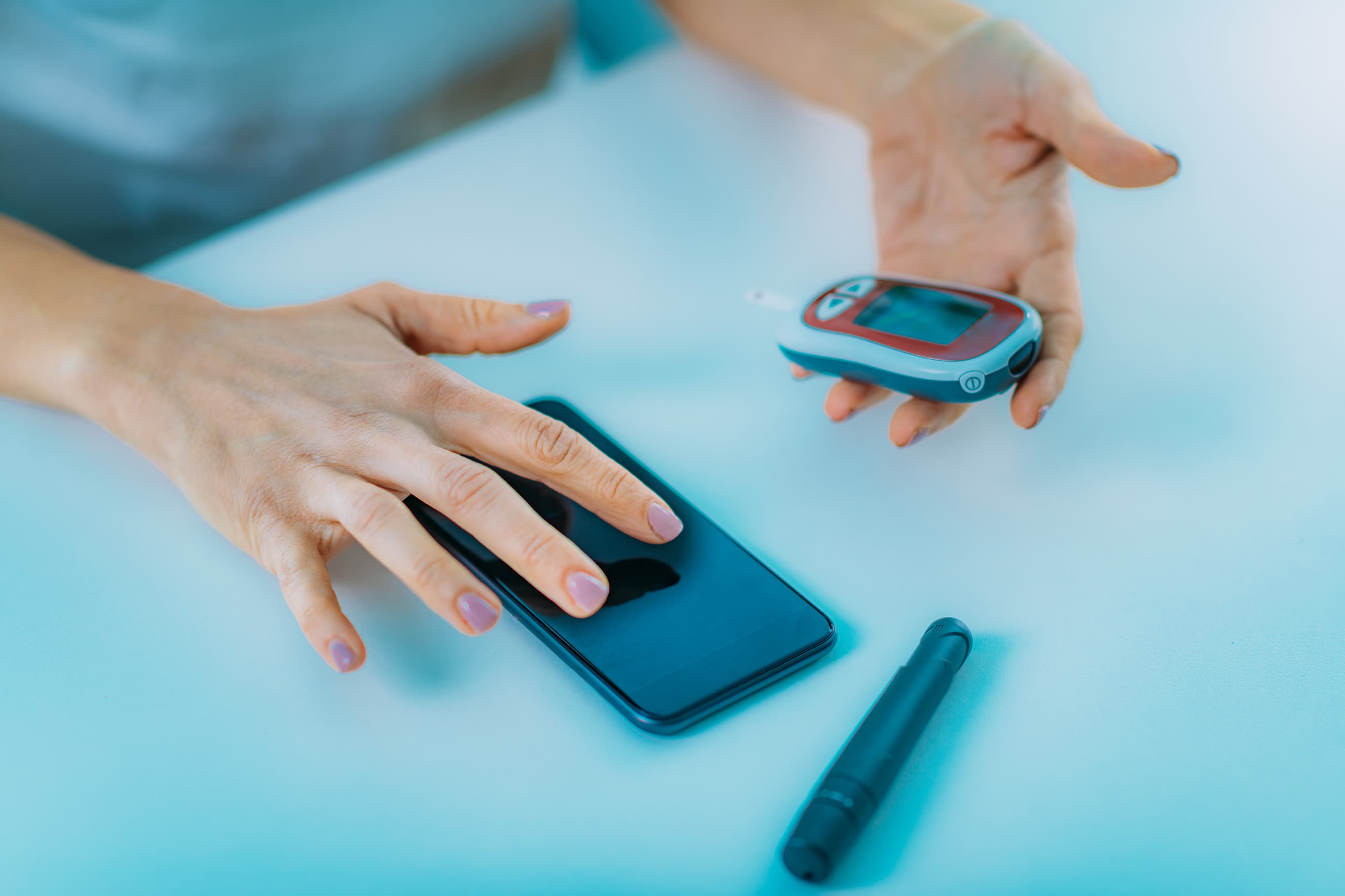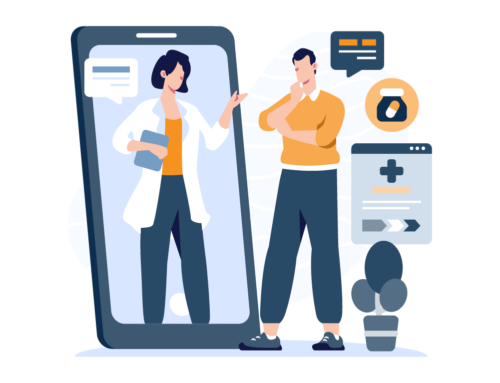Health consumers have them, but are providers and health systems ready to use them?
Innovations in healthcare appear every day. Until recently considered experimental, health-related mobile devices are being adopted by a growing number of consumers. Now, wherever it might improve the quality of the care offered, it’s time that healthcare systems, hospitals, office practices, and health-insurance providers start using the information gathered by these devices.
Patient-centric, health-related devices are a perfect example of how a new technology can positively affect patients’ health while making it easier for physicians to provide quality care. Devices used to monitor silent diseases, such as hypertension or glucose levels for diabetics, come to mind. Other examples of the many thousands of patient-centric devices already on the market include smart inhalers that record the time and frequency of use, electrocardiograms that monitor atrial fibrillation, wearables that record the number of steps a person takes in a day, and sensors that measure the duration and quality of sleep or detect the tremors associated with the onset of Parkinson’s disease. The list goes on.
Most physicians and practitioners are comfortable receiving this information directly from patients and acting on it. With mobile health apps, however, the information is sent wirelessly to the doctor’s office at the same time it’s reported directly to the patient via the patient’s smartphone. We then need to ask how the doctor receives these data, and how they fit into that doctor’s practice flow. If the information goes directly into a patient’s EHR, is it then immediately flagged for the practitioner to see, so that he or she can base decisions on it?
American consumers are adopting mobile health applications
Recent surveys reveal that 81% of American adults have a smartphone, and that 60% have downloaded a mobile health app. Of the latter group, 74% feel that using a mobile app helps them manage their health conditions. Given this broad acceptance, I was curious to see how physicians are responding to the technology.
Physicians and other healthcare professionals must process data and information as it comes in, either directly from patients or from diagnostic tests—and then, relatively quickly, arrive at a diagnosis and treatment plan. However, they’re not embracing mobile healthcare nearly as quickly as their patients are. To understand why not, it helps to understand how physicians and other healthcare providers think.
Why some physicians resist new technology
Daniel Kahneman, a Nobel-prize-winning behavioral economist, describes two types of thinking: System 1 and System 2. System 1 thinking is fast and intuitive; System 2 is slow and deliberate. We all shift between the two types of thinking in our everyday lives, and when pressed for time often resort to System 1.
You might think that busy physicians who see 25 or more patients a day would tend to use System 1 thinking in those interactions as they sift through data and information from multiple sources, including their patients and/or patient’s families, lab tests, radiology exams, and other diagnostics. However, with years of accumulated knowledge and experience, the majority of healthcare professionals merge System 2 with System 1 thinking.
Physicians tend to be decisive, self-reliant, fiercely independent, courageous, and willing to tackle problems. At the same time, we demonstrate varying degrees of adaptability. Something new, such as patient-centric mobile technology, is easy for some to incorporate into their thinking and work processes, less easy for others.
Most physicians, like their patients, are also concerned with the reliability of mobile devices and the accuracy of the data they collect. In general, physicians also are leery of the unfamiliar. If we didn’t learn something in medical school, residency, or fellowship training, we often hesitate to incorporate it into our practices. Some of us may put off using a technology because of perceived costs, legal concerns, or the time we believe it might take to implement. Others may simply not know how to incorporate it into the flow of their practices. Depending on the demographics of their practices, they may question whether mobile healthcare is appropriate for their patients.
Physicians are even more skeptical if evidence behind the digital health app hasn’t been published in a peer-reviewed medical journal or been validated in a double-blind, randomized clinical trial. But patients who use mobile health devices are generally more engaged in their healthcare than those who don’t. They have better interactions with their physicians and with the management teams at their doctors’ offices and health plans. As a result, physicians are becoming less resistant.
The article that spurred my thinking
Ida Sim, M.D., Ph.D., published a very thorough, thought-provoking article in the September 5, 2019, issue of the New England Journal of Medicine, a well-respected, peer-reviewed publication. The article, “Mobile Devices and Health,” offers a detailed description of the current state of mobile healthcare and looks at sensors (active and passive) and digital biomarkers, as well as digital therapeutics and diagnostics. Dr. Sim also considers how this technology can be integrated into clinical care.
Dr. Sim believes that the key to acceptance of mobile healthcare is “to develop and show to clinicians only those digital biomarkers that inform clinical action or clinical understanding.” Technology developers must also demonstrate “how the inclusion and presentation of data will fit into an already complicated and overstretched workflow.” If either of these challenges is ignored, physicians and patients will be dissatisfied. Physicians will find the technology less credible, and will be even less likely to embrace mobile healthcare in the future.
It’s time to do our due diligence
As Dr. Sim points out, the legal and regulatory issues also must be addressed. Advocates of mobile healthcare must take into account the explosive market for digital devices, as well as the clinical validation of the data.
Differences in the quality of healthcare already exist. Among the U.S. population, internet use and smartphone adoption vary among different demographics, despite their popularity. Integrate mobile healthcare into clinical settings, and we risk even greater disparity in quality of healthcare.
I hope mobile-device developers read Dr. Sim’s article and address the issues and challenges she spells out. Physicians and other healthcare providers who read the article will be better armed to either adopt digital healthcare, or further question its applicability to their practice and reject it. The latter would be unfortunate.
Though mobile devices do present some inherent problems, they can help solve healthcare problems. So it’s important for the various stakeholders—health plans, provider organizations, employers, and others—to do due diligence in this area when deciding on the applicability of mobile devices to their businesses.
Using our deep knowledge of the industry, the Leverage Health team consistently assesses new products and solutions. Collaborating with both innovators and stakeholders, we make it our business to find the solutions that will best move healthcare forward.
Dr. Sim offers a thorough summary of mobile devices and healthcare. Here, I provide a short due-diligence checklist to help industry stakeholders and healthcare consumers assess digital health devices and vendors:
- Caregivers and patients will want to understand the trade-offs of remote monitoring, and talk with their healthcare providers about which data to track, and why.
- Practitioners need to use the health information collected to facilitate better doctor-patient communication.
- In supporting the use of digital health technology, healthcare systems must address the digital experience with emphases on trust, equity, privacy, security, and patient expectations, and assist with piloting, deployment, clinical validation, and adoption of the technology.
- Health plans and policy makers should consider the challenges of health disparities; collaborate across institutions and vendors to achieve transparency, accountability, and clinical validation; and ensure scientific rigor, accountability, adaptability, and equity in mobile-health regulation and policy.
Mobile health devices are no longer things of the future. They’re here now, and all of us in the industry would do well to address the issues described by Dr. Sim. Leverage Health has several mobile device solutions in the market, including VIDA, VIM and Kaden Health. Ultimately, we must work together to develop a path forward that ensures that mobile technology enhances the quality of care and improves the healthcare experience for as many people as possible.
Senior Medical Advisor
Leverage Health







Stay In Touch